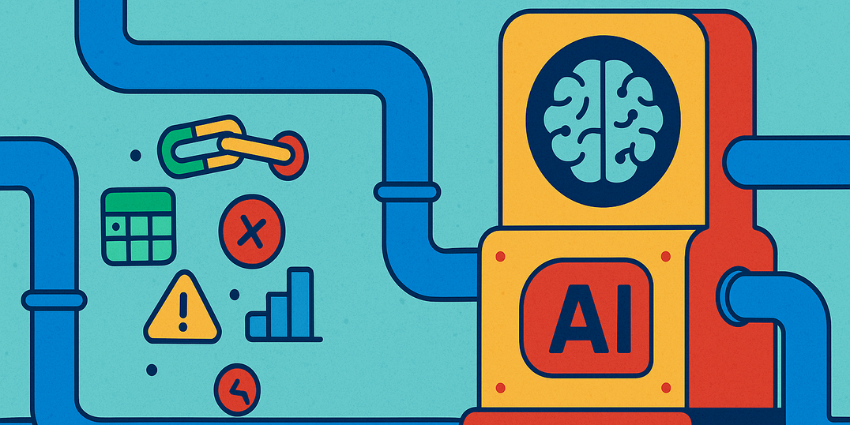Having a CRM system may feel like enough. However, some companies devise a CRM strategy to get more out of the tech.
Simply put, if a CRM system was the vehicle companies used to reach their customer relationship goals, the “strategy” would be the map they follow to ensure they arrive successfully.
CRM strategies ensure organizations leverage the solution, its features, and data to understand their customers on a deeper level, deliver more personalized experiences, empower customer-facing teams, and improve operational efficiency.
So, how do businesses build a CRM strategy that works?
Here’s the step-by-step guide for mapping out a path to CRM success.
First Step in Your CRM Strategy: Understand the System’s Potential
A CRM (Customer Relationship Management) solution helps businesses efficiently track, manage, and improve interactions and relationships with potential and existing customers.
Indeed, modern CRMs are more than “contact directories”. They help businesses optimize the customer journey across customer-facing functions, from sales and commerce to customer service and marketing.
Today’s CRM systems even feature robust tools for workflow automation, AI-powered assistants, and analytics.
The latter ensures businesses benefit from better insights into customer behaviors and preferences. Ultimately, this leads to improved decision-making.
Meanwhile, with the latest in predictive analytics, companies can design personalized, proactive experiences directly from their CRM system.
Overall, these features serve a core purpose: to help brands maximize their customer relationships.
What Is a CRM Strategy, and Why Do You Need It?
A CRM strategy is a comprehensive plan companies employ to leverage their CRM platform to improve critical customer, employee, and business outcomes.
It guides team members through the process of managing and enhancing customer engagements, leveraging data and tech.
Modern CRM strategies cross customer-facing functions, organizing, automating, and synchronizing data to develop a single “pane of glass view” of the customer.
Implementing a CRM strategy has numerous benefits.
For starters, it can enhance collaboration between customer-facing teams, bridging the gaps between different professionals.
The right strategy also streamlines pipeline management, ensuring organizations deliver consistent customer experiences.
Lastly, with a CRM strategy, organizations can identify key objectives, create a plan to achieve them, and monitor critical customer experience metrics.
What You Need Before Building a CRM Strategy
Before they start developing a CRM strategy, companies need a solid foundation formed by clear goals, insights, and data.
As such, many may begin with:
- An Extensive Audit: Companies often conduct a SWOT analysis to identify strengths, weaknesses, opportunities, and threats connected to customer experience. This should highlight key areas for focus and attention.
- Goal Setting: Establish specific goals aligned to the overall business mission. These goals might include improving customer satisfaction and retention rates or improving employee productivity and efficiency.
- Data Integration: Align relevant customer information and business data across departments, taking advantage of integrations between the CRM solution and critical business tools.
How to Build a CRM Strategy: A Step-by-Step Guide
The first step is – as highlighted above – to establish clear goals. The right goals should be SMART: smart, measurable, achievable, relevant, and time-bound.
From there, the next steps may vary. But, a standard strategy will likely include research, process planning, and implementation phases.
Here’s a step-by-step guide example teams can follow for success.
1. Identify Buyer Personas
Business leaders should identify their “target customer” with buyer personas.
Companies need to understand not just who purchases products and services from them but also what causes them to make those purchases and ignore competing solutions.
Use existing data from website analytics, social media listening tools, sales and customer service team insights, and call recordings to build in-depth buyer personas.
Data collected for buyer personas might include:
- Demographic Data: Age, gender, income, education level.
- Behavioral Data: Purchase history, product preferences, website navigation patterns, and engagement with marketing campaigns.
- Transactional Data: Details of purchases, returns, and exchanges.
- Interaction Data: Records of customer service interactions, feedback, and inquiries.
- Psychographic Data: Customer lifestyles, values, and interests.
2. Map the Customer Journey
From there, companies can begin to map out the key stages of the buyer journey, determining when and where customers interact with their organization. Valuable questions to ask during this stage include:
- Which teams interact with the customer at each stage?
- How are customers getting in touch, and is this their preferred communication method?
- How can interactions be improved?
- What are customers trying to achieve at each stage?
- What challenges might customers face?
While mapping the stages of the buyer journey, from awareness through to purchase and beyond, outline the stages of the sales pipeline. This should include looking at things like prospecting tasks, qualification, proposal, negotiation, closing, onboarding, and so on.
3. Establish Processes and Workflows
The next stage is developing clear processes for how information should be collected, managed, and used across the organization. Business leaders need to define workflows that outline the steps for handling customer interactions, from initial contact through to resolution and follow-up.
Focus on ensuring these processes are standardized to deliver a consistent experience to all customers, regardless of the communication channel they’re using. Additionally, look for CRM features that can assist with each process. For instance, CRM tools can automate tasks like following up with leads after a sales call.
4. Implement CRM Features
Now, it’s time to embed CRM software into the mix. After carefully assessing a range of options based on the elements of their CRM strategy, companies should implement a solution that integrates seamlessly with existing tools and workflows.
Key factors to consider when implementing a CRM system include scalability, user-friendliness, customization options, and support services. Remember, the right CRM system should be able to draw from, update, and align data from a range of tools and services, including a CCaaS platform.
5. Introduce AI and Automation to the CRM Strategy
This is where companies can start really making process improvements to their CRM strategy, leveraging cutting-edge AI and automation capabilities. Automation tools are excellent for helping businesses handle routine tasks like sending follow-up emails, scheduling appointments, updating records, and more (saving team members time).
On the other hand, AI-powered tools like chatbots and virtual assistants are excellent for delivering instant customer support. They’re great for streamlining things like answering FAQs or guiding customers towards the right product.
Plus, AI tools help businesses make the most out of their data, from identifying trends and patterns in customer behavior to predicting customer needs and forecasting sales opportunities.
6. Track, Measure, and Optimize
Finally, a CRM strategy should be dynamic and ever-evolving, changing as business needs and customer preferences evolve. Establish Key Performance Indicators (KPIs) and metrics to monitor based on the goals set above and regularly analyze insights.
Companies can monitor progress using reports and dashboards within their CRM systems, surveys, and direct feedback from customers. Every piece of data offers an opportunity to upgrade customer service, sales, and marketing processes, reduce inefficiencies, boost retention rates, and earn more sales.
The Power of a Strong CRM Strategy
A CRM system is an incredible tool for businesses of any size. It helps them transform customer interactions, increase loyalty, and boost efficiencies (and revenue). However, technology is only as good as the strategy behind it.
Developing a strong CRM strategy is how organizations ensure they’re making the most of their systems, processes, and teams to reach crucial business goals. But remember, CRM success isn’t a one-time setup—it’s an ongoing process.
Regularly analyzing performance metrics and adapting to changing customer needs ensures continuous improvement and sustainable growth.







